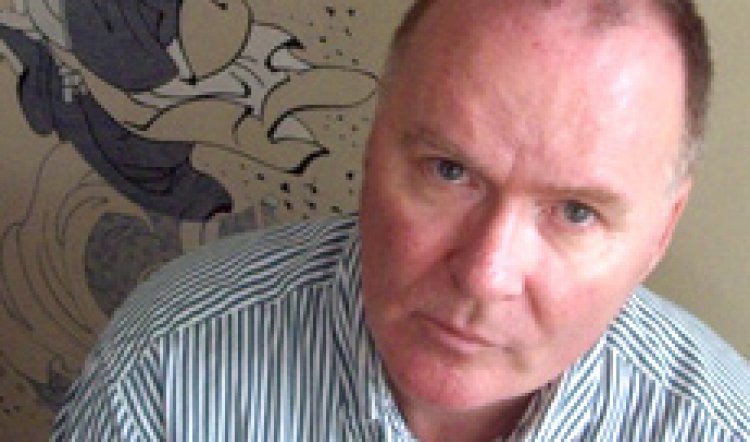
Doug Hall: Venice Biennale
When the Australia Council announced last week that Doug Hall is to be Our Man in Venice for the next Biennale, few could have been surprised and most would have breathed a sigh of relief.
Hall has dropped out of sight recently but that's only because he's been so merrily in our faces for so long and to such effect. When, after 20 brilliant years, Hall departed his fabled arts precinct in Brisbane a year ago, none other than E G Whitlam delivered the tribute speech.
He began with a classic Whitlam observation that Doug came to Brisbane (as the youngest-ever state gallery director) "when Brisbane was still called the City of Dreadful Knights." And he concluded his address by saying: "The Emperor Augustus boasted that he had found Rome brick and left it marble. Wayne Goss and Peter Beattie could say the same about the Brisbane Art Gallery buildings. Unlike Augustus, they give the credit to the man who produced the ideas for the buildings and their contents. Let us drink to the health of Doug Hall, a great and good public servant of this city and this State and of our country and our region."
It's the kind of praise most people don't get to hear about themselves because it's usually delivered as a post-mortem eulogy. Happily for Hall, he was there, albeit with pink ears, when Gough reminded haute Brisbane what their director had done for the city. Typically, Hall quips of the speech: "when too much vainglory is not enough!"
Not really: having presided over turning Brisbane into one of the contemporary art destinations of the world by establishing the Asia-Pacific Triennial, while persuading successive state governments to continue to fund the building and filling of the spectacular contemporary art museum, GoMA, Hall is rightly acknowledged as one of the most significant movers in Australian art of his generation. No wonder Biennale chair James Strong went after him.
"Yes, he did ask me to consider it," Hall affirms. "I said I would think about it and I did - for about a week - because I wanted to be sure that I could do it properly and that I wanted to. That I wouldn't be a round peg in a square hole. Then it all came together."
Was the success of the Asia-Pacific Triennial a factor in the appointment and his decision?
"Well I like the idea of cultural diplomacy, which is what that has been. It's not about leading the proletariat to a new Utopia. It's about international representation and not turning it into banal or twee or heavy-handed political gestures."
Despite its critics, Venice is still held in high regard and as a site of international public introspection, it is second to none. For Australia's image in the world it has been a shape-shifter.
"If you actually look at the rise of modern art in Australia you can divide it loosely into movements and the longest and most enduring is Western Desert painting," says Hall. "It didn't mark Australia as derivative, it was genuinely different and there is something else about it that I think makes it peculiarly Australian.
"The ease with which mainstream institutions simply inserted and interleaved the work into the national story, with enormous goodwill, is unique. We forgot to have a major debate on how to do this - we just did it. Now, if you think about the US, for instance, the idea of an indigenous art movement moving into the mainstream is unthinkable."

A question that Hall asks of himself and Australian art in looking at Venice is: why should the rest of the world be interested in Australia?
"One's own national introspection may not travel internationally," he explains. (How true: Australian theatre rarely does it successfully.) "I think that's why audiences overseas are naturally drawn to Australian Indigenous art. I realised that when I was walking through a Japanese gallery with its director. On display was a rather wonderful exhibition of 18th and 19th century German art, but he was quite dismissive. He said they could see that kind of thing any time, anywhere."
From that it is suddenly obvious why non-Aboriginal contemporary Australian art is not high on overseas shopping lists. It is an introspection all too familiar and derivative of European art movements of every era and therefore of little relevance outside the Wide Brown.
"I think it is a problem," agrees Hall. "The syntax of Australian-European art means it's very difficult to muster much sense of engagement. In so many things I think we are too risk averse."
Is that a hint of what we can expect of Hall's tenure as Mr Venice, perhaps?
He laughs. "My comments might be construed as favouring Western Desert painting for Venice. Of course no decision has been made, and a program of virtuous cultural democracy has yet to tun its course." Then he adds, "Me and bureaucracy are not always the most comfortable bedfellows. But I have realised the extent of doing it properly. It's a pretty generous offer to say yes and then reject it or stuff it up.
"There are basically three elements: the selection procedure, then fund raising - and that's about people with interest, influence and money, the ricochet effect beyond the immediate goal. Then there's the advocacy of Venice: making Australia look very, very good."
And then what? "I'm aware these days of my likes and dislikes. I liked talking more and more about art and I disliked more and more talking about the body politic. I have resolved not to be a museum director again. When the gallery (GoMA) opened: that was it. I had 20 years with 11 ministers including two premiers (Ahern and Goss) and it probably doesn't get better or more interesting than that."
And Brisbane is no longer the city of dreadful knights.



